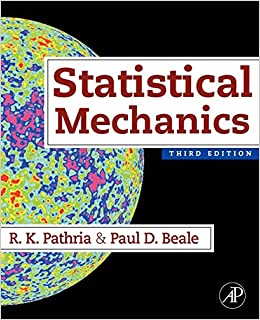For a one-dimensional system, such as the ones discussed in Sections 13.2 and 13.3, the correlation function
Question:
For a one-dimensional system, such as the ones discussed in Sections 13.2 and 13.3, the correlation function \(g(r)\) at all temperatures is of the form \(\exp (-r a / \xi)\), where \(a\) is the lattice constant of the system. Using the fluctuation-susceptibility relation (12.11.11), show that the low-field susceptibility of such a system is given by
\[
\chi_{0}=N \beta \mu^{2} \operatorname{coth}(a / 2 \xi) .
\]
Note that as \(T \rightarrow 0\) and, along with it, \(\xi \rightarrow \infty, \chi_{0}\) becomes directly proportional to \(\xi-\) consistent with the fact that the critical exponent \(\eta=1\).
For an \(n\)-vector model (including the scalar case \(n=1\) ), \(\xi\) is given by equation (13.3.17), which leads to the result
\[
\chi_{0}=N \beta \mu^{2} \frac{I_{(n-2) / 2}(\beta J)+I_{n / 2}(\beta J)}{I_{(n-2) / 2}(\beta J)-I_{n / 2}(\beta J)}
\]
Check that for the special case \(n=1\) this result reduces to equation (13.2.14).
Step by Step Answer:






